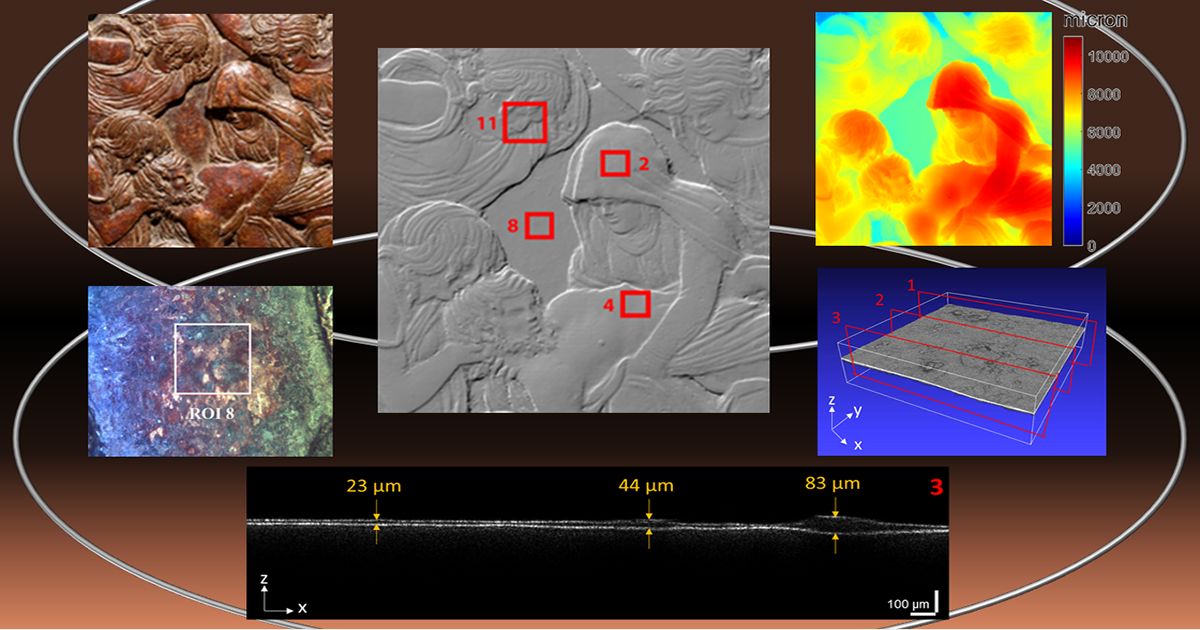Functional Coatings for Cultural Heritage Conservation
A special issue of Coatings (ISSN 2079-6412). This special issue belongs to the section "Corrosion, Wear and Erosion".
Deadline for manuscript submissions: 30 June 2024 | Viewed by 1441

Special Issue Editors
Interests: non-invasive diagnostics of works of art; multispectral analysis; VIS-NIR spectroscopy; 3D survey; optical coherence tomography; NLO microscopies; photo-acoustics
Special Issues, Collections and Topics in MDPI journals
Interests: design, development, and application of instruments for the non-invasive diagnostics of works of art; multispectral imaging (UV-VIS-NIR, THz); OCT (optical coherence tomography); 3D survey; NLOM (nonlinear optical microscopies)
Special Issues, Collections and Topics in MDPI journals
Special Issue Information
Dear Colleagues,
Today, a wide variety of film-forming materials are used for the protection and conservation of works of art. Coatings applied in the past have undergone transformations that have caused their morphological and structural properties to deteriorate. In order to verify the performance and durability of these materials, their chemical and physical characterisation is of paramount importance. It is also necessary to focus the research on the development of new eco-friendly materials that are compatible with the objects to be preserved and that can be removed with green solvents or other methods that do not affect the substrate.
The aim of this Special Issue is to expand the research into the development, characterisation and monitoring of materials that can be used as protective coatings on artworks of various types, compositions and sizes. Also of great interest is the definition of new methods for the removal and replacement of coatings, including the monitoring of the cleaning process.
Dr. Alice Dal Fovo
Dr. Raffaella Fontana
Guest Editors
Manuscript Submission Information
Manuscripts should be submitted online at www.mdpi.com by registering and logging in to this website. Once you are registered, click here to go to the submission form. Manuscripts can be submitted until the deadline. All submissions that pass pre-check are peer-reviewed. Accepted papers will be published continuously in the journal (as soon as accepted) and will be listed together on the special issue website. Research articles, review articles as well as short communications are invited. For planned papers, a title and short abstract (about 100 words) can be sent to the Editorial Office for announcement on this website.
Submitted manuscripts should not have been published previously, nor be under consideration for publication elsewhere (except conference proceedings papers). All manuscripts are thoroughly refereed through a single-blind peer-review process. A guide for authors and other relevant information for submission of manuscripts is available on the Instructions for Authors page. Coatings is an international peer-reviewed open access monthly journal published by MDPI.
Please visit the Instructions for Authors page before submitting a manuscript. The Article Processing Charge (APC) for publication in this open access journal is 2600 CHF (Swiss Francs). Submitted papers should be well formatted and use good English. Authors may use MDPI's English editing service prior to publication or during author revisions.
Keywords
- coatings
- non-invasive analysis
- cleaning
- monitoring






